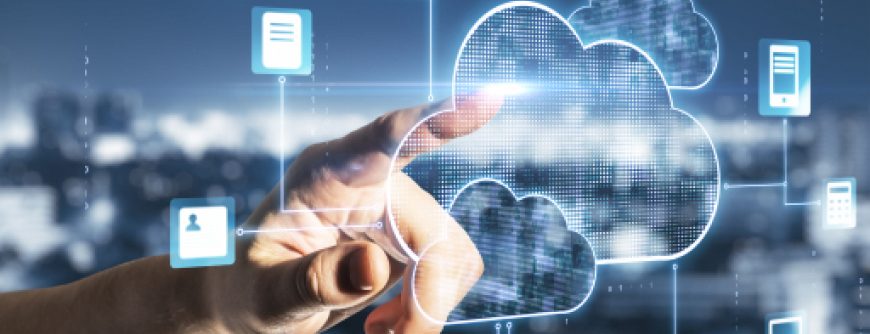Cloud Computing vs. Cloud Storage
Within the span of a decade, the cloud has become a mainstay of most major applications and services. This includes a wide range of digital services used by consumers, as well as the vast majority of enterprise applications. Adoption has grown thanks to both an increase in cloud service providers and the ease of setting up services in the cloud.
But the cloud is not a monolith. Cloud providers offer different services to their customers. Cloud computing and cloud storage, for example, are two very different services. Yet, they’re often—inaccurately—used interchangeably. Let’s take a closer look at the differences between the two.
Cloud Storage
Almost everyone on the internet has used some form of cloud storage. Common examples of cloud storage services include Google Drive and Dropbox. They allow users to access data from anywhere in the world and share it with anyone they choose.
Email is another form of cloud storage. Service providers, such as Google and Microsoft, store email data on servers. Users can access this data from any computer and send and receive emails.
Many businesses use cloud storage so they don’t have to invest capital to set up their own data centers. Further, they don’t have to incur the costs of maintaining that infrastructure or managing networks and security. Cloud storage providers usually take care of these requirements.
In addition to the costs of on-premise infrastructure, organizations would also incur the costs associated with scaling.
In the traditional storage model, businesses build and manage storage infrastructure themselves. Organizations typically can’t scale resources without investing in additional equipment. If demand for storage space outpaces capacity, new resources can’t be implemented instantly. Instead, they must be planned for and then executed, requiring a large capital outlay. When the requirement for resources is low, the remaining storage space sits idle, consuming power and depreciating in value.
Cloud service providers, on the other hand, offer the ability to scale easily. Resources can be scaled up or down in an instant. Users only pay for the services and storage space they actually use. This model is often referred to as “pay-as-you-go” (PaYG). It tends to be much more efficient for businesses than spending capital to build and maintain infrastructure.
Cloud Computing
In addition to cloud storage solutions, many cloud service providers also offer computing solutions in the cloud.
In the data-intensive field of machine learning (ML), graphics processing units (GPUs) can process terabytes (TB) of information more efficiently than central processing units (CPUs). However, GPUs are too costly for most organizations to purchase, especially if their requirements are sporadic. Cloud computing can deliver the processing power and cost efficiencies needed to support ML.
Beyond this use case, cloud computing infrastructure can be accessed by both the general public and businesses for their computing needs. This includes tasks like processing large data sets for analysis or running web applications, mobile apps, and websites. The distinction is that these activities require very little storage space. Instead, most of the data being processed will already reside in cloud storage, ready to be sent for processing.
That said, cloud computing shares some of the same benefits as cloud storage:
- There’s no need to invest in and build in-house infrastructure.
- You can scale processing power up or down, as needed.
- You pay only for the computing power that’s actually used.
- You don’t need to worry about security.
- You can access processing power in a location-agnostic manner.
What’s the Difference Between Cloud Computing and Cloud Storage?
The difference between cloud storage and cloud computing is in the type of resource that’s provided over the internet. Cloud computing is processing power made available over the cloud. Cloud storage is data storage capacity made available over the cloud.
The objective and requirements of the application will determine whether cloud storage or cloud computing (or both) is required. When storing a large amount of data so that it can be accessed from anywhere in the world, cloud storage is needed. When processing power is needed to compute operations based on that data, cloud computing is required. Businesses often use both to power their applications with the cloud.
Take Netflix, for example. The streaming giant built its application using a microservices architecture. The company stores video files on cloud-based AWS servers. Because these servers are distributed across the globe, there’s minimal latency in delivering this data to the customer.
Netflix also uses large-scale data analytics to improve its operations and create new content. As noted, one of the ways Netflix reduces latency between its servers and its users is by saving video files in different locations using cloud storage. Copying its complete content library to every location would be inefficient and expensive. Netflix runs analytics on its data to identify the content that’s most likely to be popular in different regions. Running analytics on how customers view and consume data in different regions requires processing power and is done using cloud computing.
Managing Your Cloud Storage and Cloud Computing Needs
Ultimately, cloud storage and cloud computing support different needs. Cloud computing requires a large amount of processing ability but very little storage. Cloud storage requires less processing power but faster, more efficient storage.
FlashStack® brings together computing, network, and storage components in one solution. It delivers scalability, simplicity, and powerful performance by combining the best of Pure Storage® and Cisco.
If you’re looking for a fast, high-performing, and reliable infrastructure for your development requirements, learn more about how FlashStack® can support your organization.



